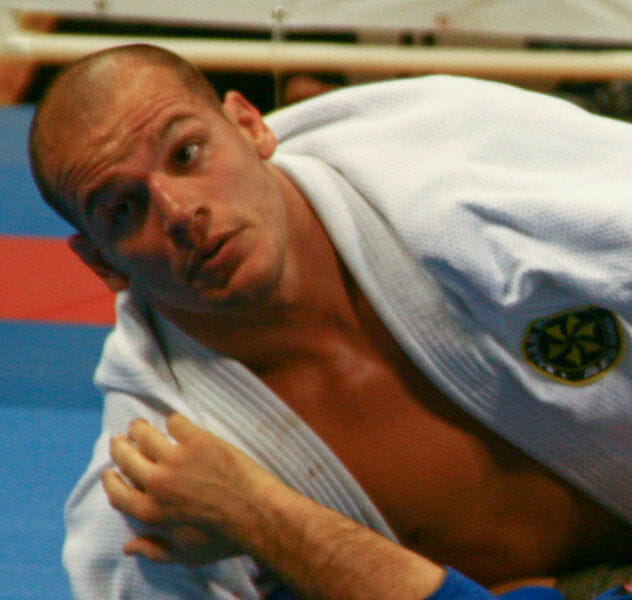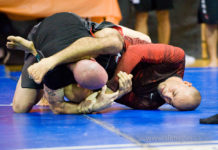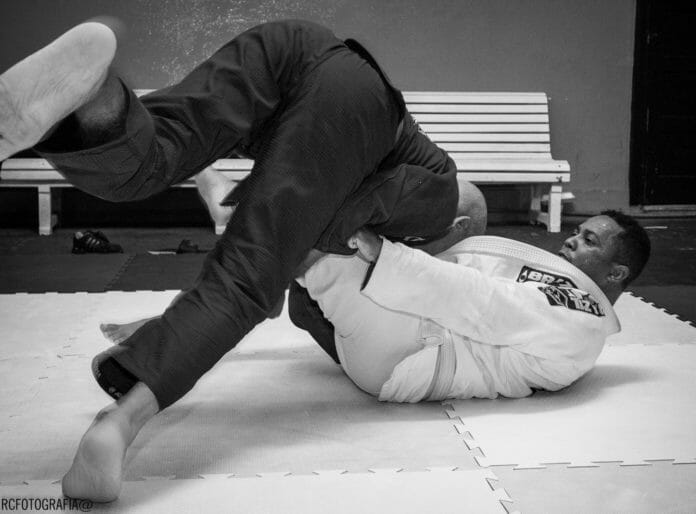Guard Passing: The Art Within the Art
Passing the guard is probably the most complex aspect of jiu jitsu. Basically an entire martial art in and of itself. Being in someone’s guard is a very dangerous place. You have to focus on passing while also avoiding a litany of attacks and sweeps.
But we have to do it, because the rewards for shutting down our opponent’s guard are too great to ignore. In fact, a recent study of 100 IBJJF matches showed that guard passing was the single greatest indicator of success in competition.

Conversely, guard retention is equally important. When you look at some of the great competitors of our era, they have impassable guards. Some literally go for decades without anyone passing them.
And what about leglocks? Are they a loophole to guard passing? Yes and no. Whether your goal is to pass or submit, you will always need to content with a person’s guard.
We may have yet to master the impassible guard, but there is a simple thing we can do to frustrate our opponents:
Make them pass our guard more than once.
The Castle Analogy
Take the medieval castle as an example. Huge stone walls, thick motes, archers at every tower, and a well stocked pantry. They were death traps, and yet armies had a solution to every defense. It was just a matter of having the right tools and approach. And yet most armies would never actually attack a castle. They would try and wait them out instead.
The real reason castles rarely fell was time. They were designed not to defeat armies, but exhaust them. And they did this through layers.

If you look at the castle above, an army would need to siege no less than seven layers of walls before arriving at the keep. Each time they broke through a layer, defending soldiers would simply retreat inward to the next layer and keep up a steady stream of arrows, rocks, and hot oil. It took and enormous expenditure of time, resources, and human life. It just wasn’t worth it.
Make Your Guard the Castle
If you’re a half guard specialist, that’s terrific. But half guard is a close range guard. It’s like the last wall of the castle. When your opponent beats it, the guard is passed. So if you’re on your butt and your opponent is standing over you, engage him with a long range guard, like the Spider Guard. If he isolates a leg or gets too close to maintain proper distance, retreat to a medium range guard like the De La Riva. If all else fails and he’s still coming, now you can close out with your half guard. But you made him expend time and energy to get there.
Find Synergy With Your Guards
If you have a preferred guard, start looking for the positions that flow from it. Spider Guard connects to Lasso Guard very well. Reverse De La Riva connects to Half Guard. You can use these to find natural transitions so that no matter what range your opponents like to fight at, you have an answer.
If you’re a newer student, you probably do a lot of work from the Closed Guard. A good position to retreat to when your opponent advances on you is often the half guard. If your opponent starts backing out, you can follow him with the spider guard. Experiment with different combos, but try and have three solid guards that connect to each other.
It Doesn’t Always Work, But in The Aggregate it Will
It’s not always possible to retreat once an opponent has started a solid pass. Sometimes they are just too skilled. But remember, you will also become skilled over time at flowing from one guard to another.
The math is on your side. Instead of inviting an opponent to pass a single guard, you’re challenging them to pass multiple different guards. They have to pass all of them to win, but you only need to sweep or submit them once.
Ready to be overwhelmed? Here is a great article listing virtually every guard there is with videos for each. Enjoy putting your game together!
For something more directed, here’s another YouJiuJitsu article highlighting Henry Akin’s open guard strategies.
Do you have a strong guard chain that you use? Feel free to share in the comments!





